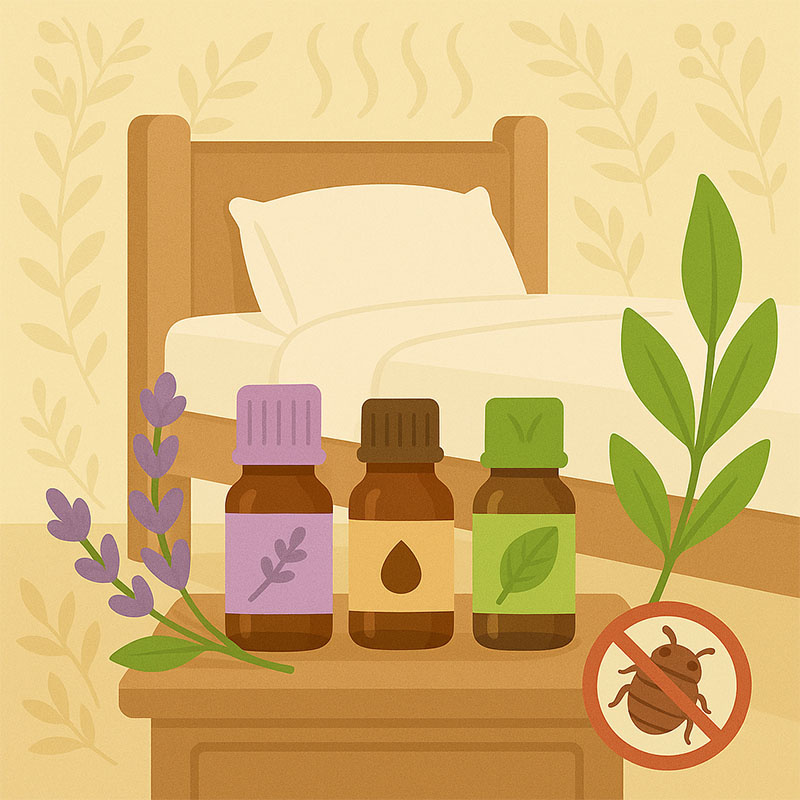Citrus oil comes from the peels of fruits like lemons, oranges, and grapefruits. To us, the scent is fresh and uplifting. To carpenter bees, it’s a giant “keep out” sign. I’ve sprayed it around wooden railings and eaves, and the bees moved on without me having to hurt them.
Here’s why I rely on it:
- Repels without harm – It discourages carpenter bees but doesn’t kill them.
- Safe around family – I feel comfortable using it around kids, pets, and even pollinators like honeybees.
- Eco-friendly – No toxic chemicals, no harsh residues.
- Smells amazing – Honestly, it leaves my outdoor space smelling like fresh lemons.
👉 If you don’t feel like making your own spray, you can grab a natural, ready-to-use option like the Donaldson Farms Carpenter Bee Citrus Repellent. It’s natural, safe, and works straight out of the bottle.
My Go-To DIY Citrus Spray Recipe
Sometimes I enjoy making my own citrus spray, especially if I’ve just used fresh lemons or oranges in the kitchen. It’s cheap, quick, and surprisingly satisfying.
What I use:
- Peels from 2–3 citrus fruits (lemons and oranges work best for me)
- Enough water to cover the peels
- Optional: a few drops of essential oils like lemongrass, peppermint, or eucalyptus
- A pot for boiling
- A fine mesh strainer or cheesecloth
- A clean spray bottle (I like glass)
- A marker to label the bottle
How I make it:
- I collect the citrus peels and drop them into a pot.
- I cover them with water and bring it to a boil.
- For extra strength, I’ll add a few drops of essential oil.
- I let it simmer for 15–20 minutes so the oils really infuse into the water.
- After straining out the peels, I pour the liquid into a spray bottle.
- I label it and store it in a cool, dark spot.
👉 These days, though, I usually keep a set of citrus essential oils like this one in my pantry. A few drops mixed with water makes a quick spray that’s just as effective—no boiling required.
How To Apply Citrus Spray for Best Results
The first time I used citrus spray, I just misted the surface of my deck and wondered why it didn’t work. The real trick is spraying directly into the bees’ entry holes and staying consistent with reapplication.
Here’s my routine:
- I gear up first – Gloves and goggles save me from splashes.
- I target the holes – Spraying right where the bees are nesting works best.
- I shake before spraying – Citrus oil and water separate naturally.
- I pick the right time – Early morning or dusk when bees are less active.
- I reapply regularly – Every few days, and especially after rain.
My spray schedule looks like this:
| Condition | How Often I Spray | Where I Focus |
|---|---|---|
| Early Morning/Dusk | Every 2–3 days | Entry holes, eaves, railings |
| Calm, Dry Days | As needed | Exposed wood, areas with activity |
| After Rain | Right after rainfall | All vulnerable wood surfaces |
The Pros and Cons I’ve Noticed
Citrus oil is a great first line of defense, but it’s not perfect.
What I like:
- Safe and natural
- Easy to make or buy
- Smells great
- Doesn’t harm bees
What I don’t love:
- Needs frequent reapplication
- Doesn’t stop bees if they’ve already tunneled deep
- Works best as prevention, not as a cure
Other Methods to Combine with Citrus Oil
Sometimes I need extra backup. Over the years, I’ve tried other methods, and here’s how they stack up:
| Method | Effectiveness | Environmental Impact |
|---|---|---|
| Vinegar Spray | Moderate | Low |
| Diatomaceous Earth | Moderate | Low |
| Peppermint Oil | Moderate | Low |
| Carpenter Bee Traps | High | Low |
| Boric Acid | High | Moderate |
I’ve found that painting or varnishing wood, sealing cracks, and setting out carpenter bee traps alongside citrus oil gives me the best long-term results.
When to Call Pest Control
I don’t mind DIY, but there are times when professionals are the smartest move. If the bees have caused structural damage, or if they’re nesting inside walls, it’s usually worth calling in pest control. They can seal entry points and use safe treatments that last longer than my sprays.
My Final Take
Citrus oil has become one of my favorite natural tools for keeping carpenter bees away. It’s safe, affordable, and actually works when applied consistently.
If you want to try it yourself, you’ve got two easy options:
- Go the DIY route with a citrus essential oil kit.
- Or skip the mixing and grab the Donaldson Farms Carpenter Bee Citrus Repellent.
Either way, you’ll be taking a safe, natural step toward a buzz-free deck.




